*No, not when the fish are on holiday. When we are.
Fish keeping best practice is apparently to feed by hand as it provides a routine to check they’re healthy. Sensible stuff. But not very compatible with catching the 07:27 to London. Or having a life outside of the greenhouse.
It was the latter that prompted some action: find a way to keep the boys fed so we can take some much needed respite from all the various “health checks” around the greenhouse.
Now, you’re probably thinking, one can buy automatic fish feeders on Amazon and indeed one can – but that would be far too easy, with zero scope for over-engineering. So a build was the only way…
After a bit of research, a trip to Homebase, and a rummage in the shed, a likely looking component list was assembled:
- A couple of plastic storage boxes to hold the fish food.
- A dead 12V electric drill to rob a motor from.
- An auger type drill bit and a bit of pipe as the delivery system.
- Jubilee clips, tie wraps, bits of wood to mount everything on.
- And Gorilla tape. Of course.
So here we go…

One of the boxes gets a hole to take the pipe, the other gets cut down to create a kind of funnel to direct the feed down to the pipe.
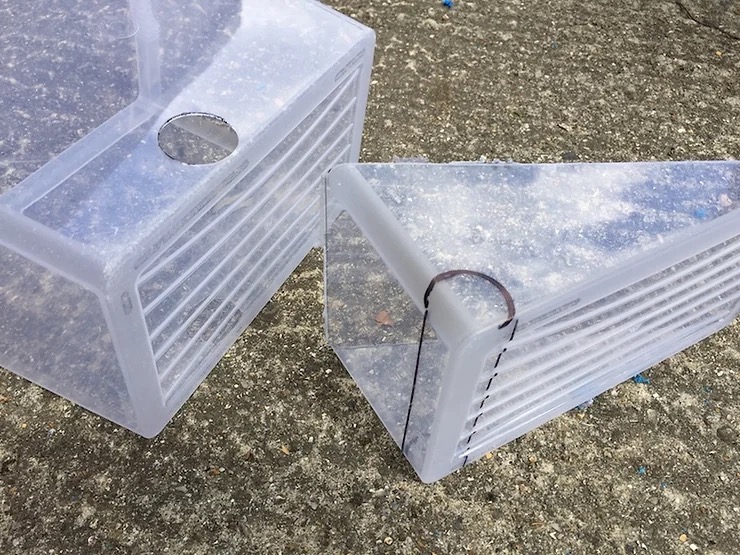
This is how it comes together
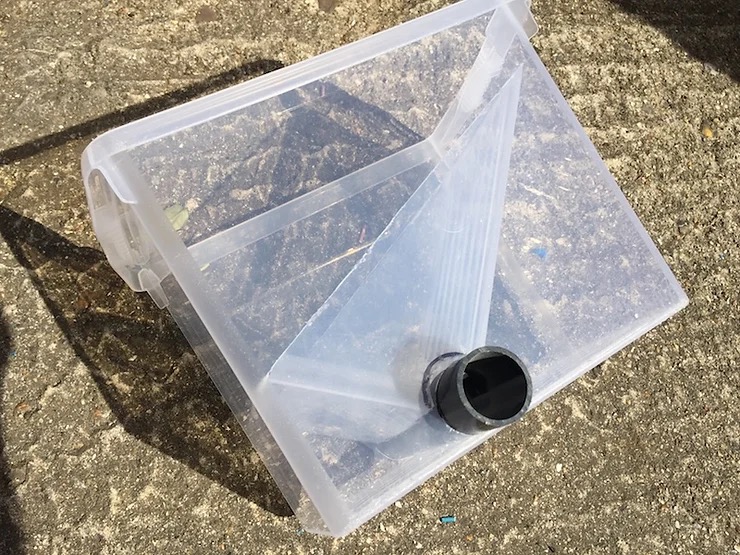
The pipe has a cutout to allow the feed to fall through on to the drill bit:
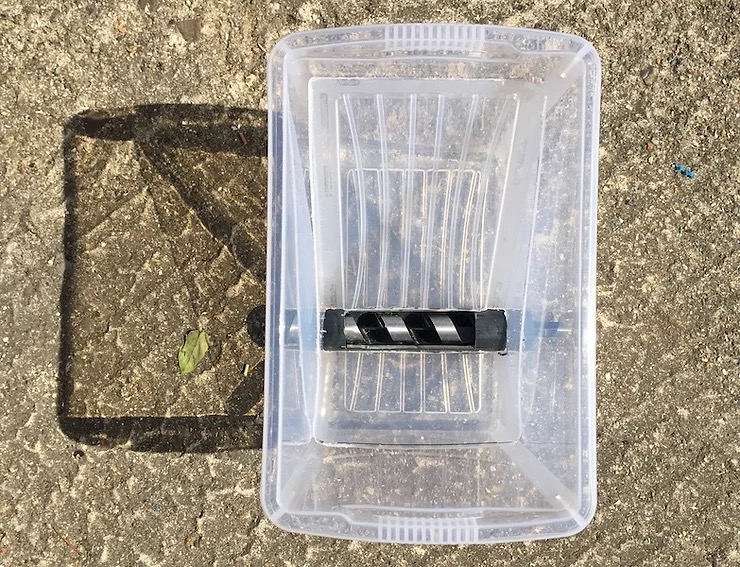
Everything is screwed on to a bit of wood and held in place with a couple of jubilee clips.

The electric drill was then cannibalised to release the motor which was then fixed into place (in reverse so it pushes the feed rather than pulling it).
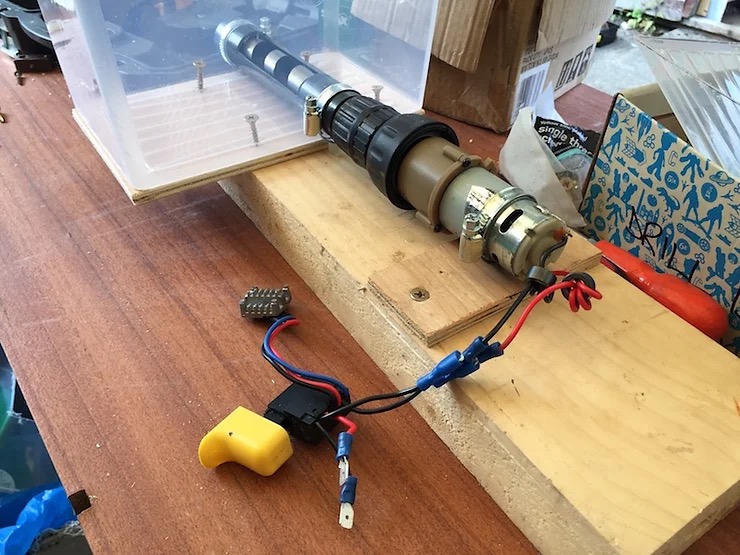
A bit of testing with a 12V battery found the optimum speed, which was set by clamping the trigger half closed with a tie wrap (engineering bonus points for that :)).
The next challenge was to find a way of running the drill for a set time to deliver a portion of food and then stop. eBay to the rescue… you can get these timer relays which will switch on for an adjustable time period, then switch off again. Perfect – if you’re Chinese and able to read the instructions… For the rest of us it’s a case of half an hour trial and error with the wire jumpers to find a suitable timer range.

All that’s needed is final flourish of Gorilla tape…
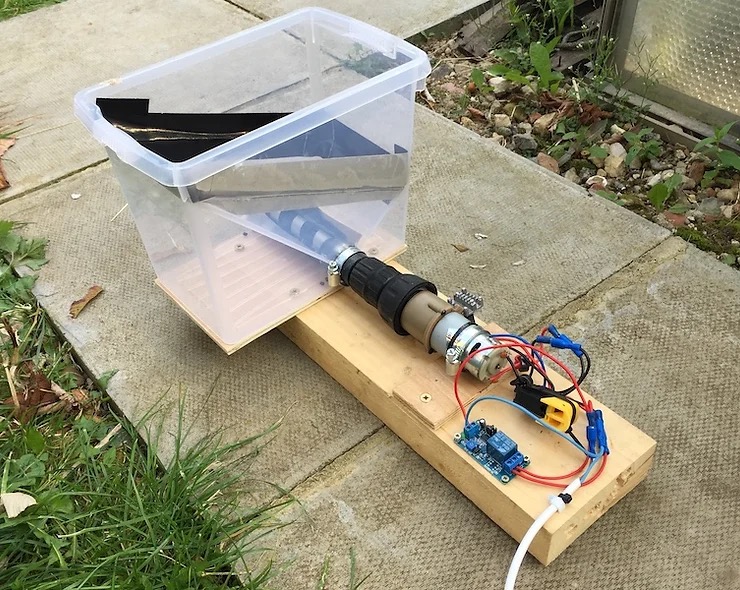
…and it’s time for field trials:
For the production deployment, it’s a case of hooking it up to a 12V battery. Using a timer we then power it up every hour for 5 minutes (which is the finest control on the timer). The timer relay then kicks in, powers the drill for about 2 seconds, then switches it off again. This delivers a meal-sized portion of tasty fish food to the boys. And we can easily choose how many feeds they get a day.
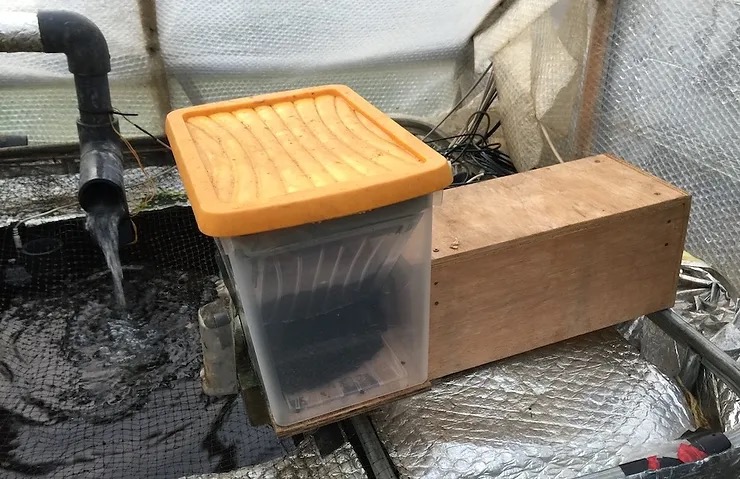
*Update* A few months in, and the feeder has worked without a hitch. It needed a plastic splash guard so the pellets didn’t get soggy around the end of the pipe. And it now has a cover to make it look tidy.
And, more importantly, we’ve managed to get away on holiday 🙂
